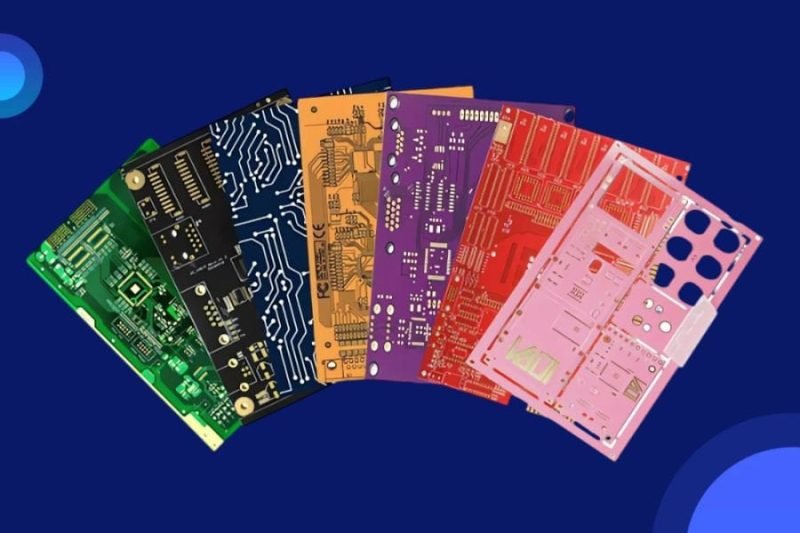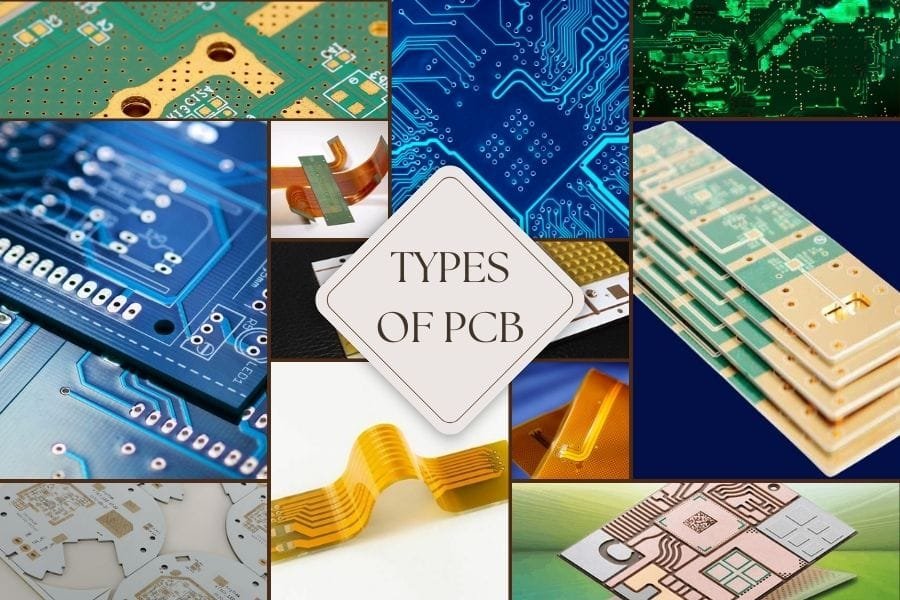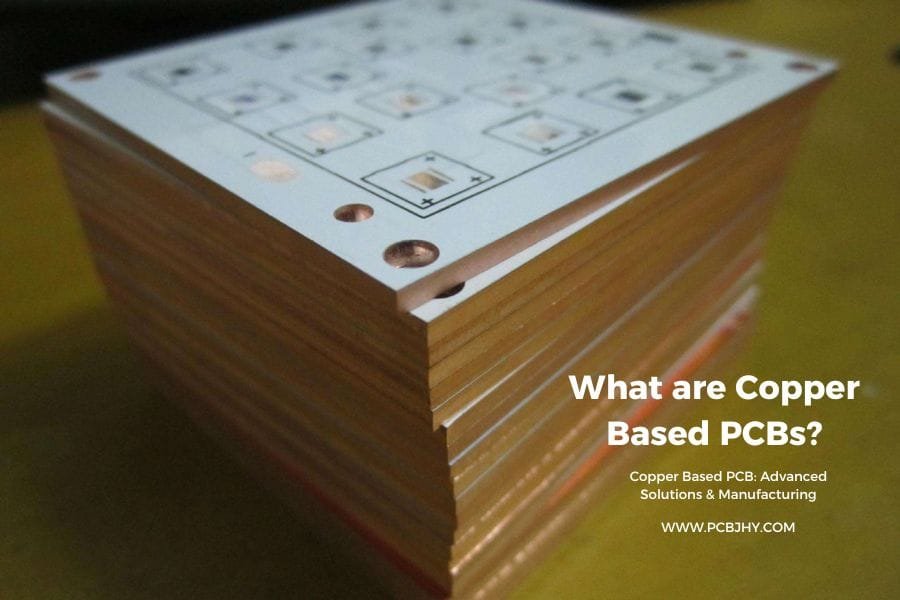Introduction
PCBs are the foundation of electronics. These boards provide the mechanical structure to mount components while enabling electrical connections through copper traces etched from copper sheets laminated onto the board. A key element of PCB fabrication is the solder mask – an epoxy-based coat applied to the surface of the PCB.
The solder mask serves several important functions. It acts as an insulator, preventing solder bridges from forming between pads. It also provides corrosion resistance and protection for the copper traces from environmental damage. Additionally, the solder mask offers an aesthetic finish, with various color options available.
But why does solder mask color matter? While green is the most popular shade used, and often the default option from manufacturers, the choice of solder mask color can impact the performance, appearance, and functionality of a printed circuit board.
In this article, we will provide a guide to the most common PCB solder mask colors, and discuss the factors that go into selecting the ideal shade for your project and application. We will uncover how subtle variations in hue can enhance PCB trace visibility during inspection, reduce noise, improve thermal dissipation, and meet industry-specific standards. Read on to learn how solder mask color can take your PCB fabrication to the next level.
Common Solder Mask Colors
Green
The most popular solder mask color by far is green. It’s the industry standard and default option from most PCB manufacturers. The traditional green provides high contrast against the copper layers, making it easy to inspect the quality of traces and etches. This high visibility ensures consistently high-quality PCBs.
Typical green solder masks utilize color shades like RAL 6032 signal green or RAL 6029 mint green. These brighter greens provide excellent visibility while avoiding issues sometimes seen with darker shades like RAL 6017 may green.
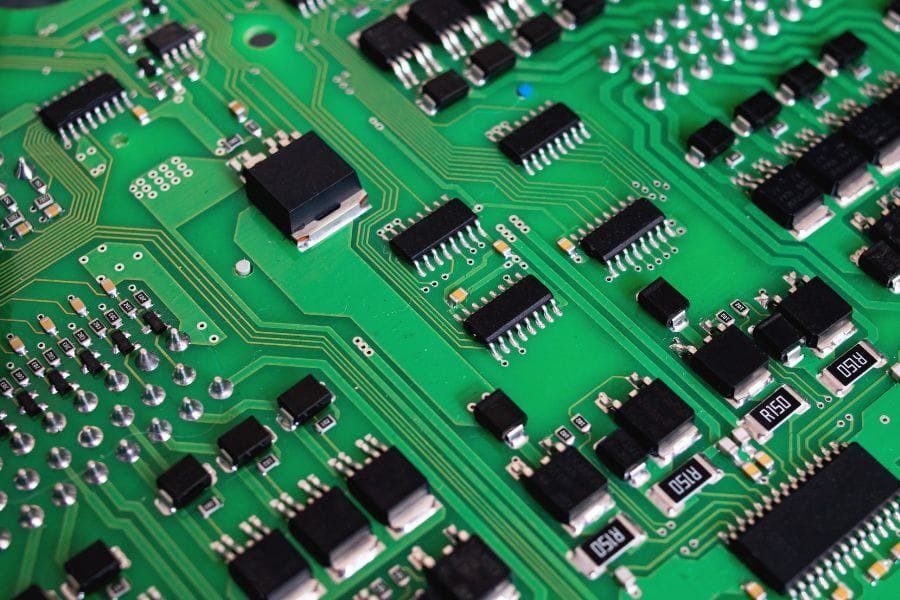
Green PCB with tracks
Blue
Blue solder masks have risen in popularity for high-frequency applications. The dielectric properties of the blue solder mask make it ideal for boards with signals in the GHz range. Blue reduces noise and crosstalk versus standard green mask, while still providing good trace visibility.
Common blue solder mask colors are RAL 5015 sky blue and RAL 5005 signal blue. These shades offer excellent dielectric performance and visibility above 1GHz.

Blue PCB
Red
Vibrant red solder mask (often RAL 3020 traffic red) is frequently used when ease of inspection and quality control is critical. The high contrast allows tiny flaws and particulates to be easily spotted. Aerospace, military, and medical applications where reliability is paramount benefit from red mask’s enhanced inspection capability.
Vibrant red solder mask (often RAL 3020 traffic red) is frequently used when ease of inspection and quality control is critical. The high contrast allows tiny flaws and particulates to be easily spotted. Aerospace, military, and medical applications where reliability is paramount benefit from red mask’s enhanced inspection capability.
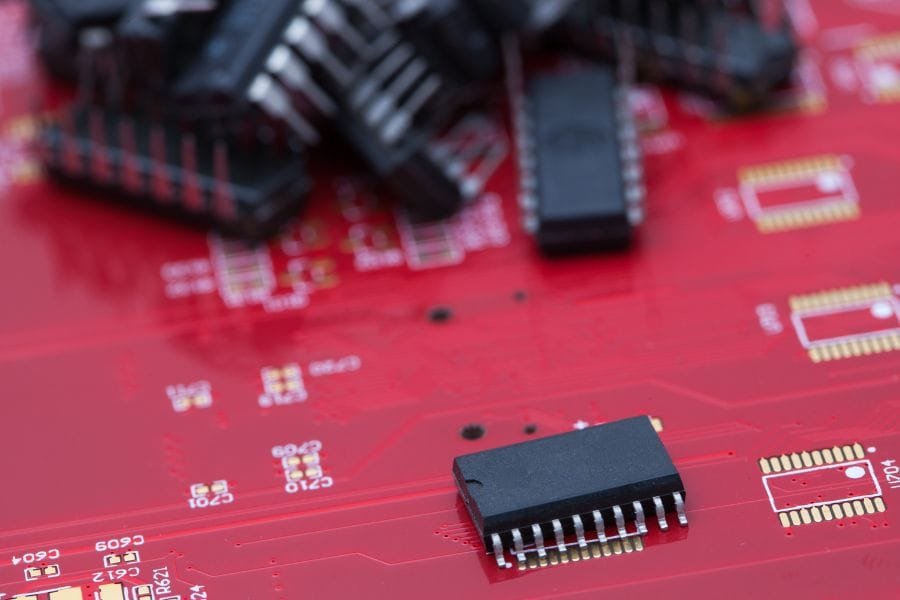
Red PCB
Yellow
Yellow solder masks like RAL 1021 rape yellow provide high visibility for tracing and etching inspection. This makes yellow a good choice for prototypes and short production runs where quality control is focused on visual inspection. Yellow provides all the benefits of red mask visibility in a brighter, more vibrant tone.

Yellow PCB
Black
Black solder mask (typically RAL 9005 jet black) offers some unique benefits. The dark color minimizes light reflection and absorption. This reduces unwanted electromagnetic emissions that can cause interference and crosstalk. Black masks are ideal for boards that need to meet strict emissions regulations. The color also provides an aggressive, high-tech look.
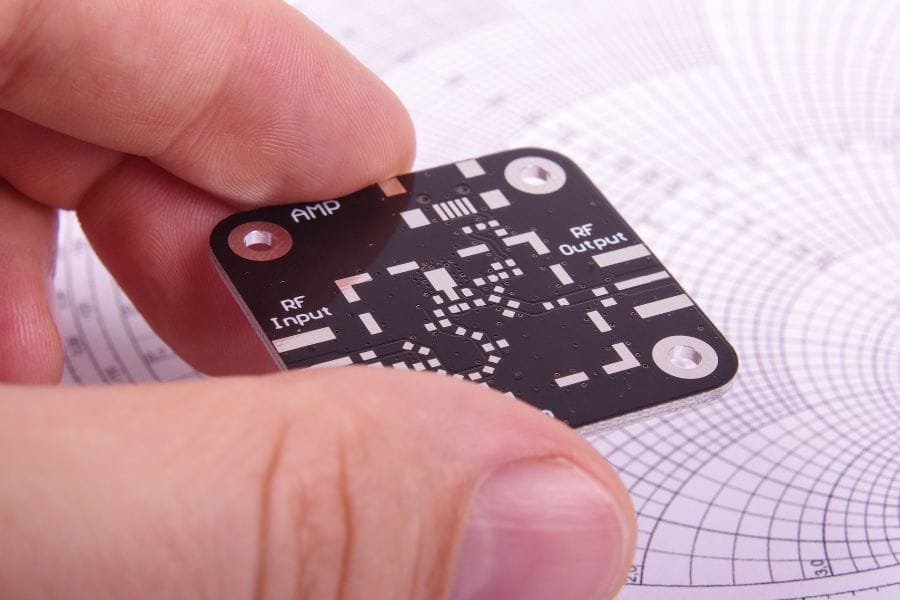
Black PCB
White
White solder mask (RAL 9010 pure white) provides the maximum contrast against PCB substrate material. This ultra-high visibility makes white an excellent choice for applications like LED lighting. The white mask helps reflect and diffuse light off the PCB, improving brightness. The high contrast also supports automated optical inspection (AOI) for process control and quality assurance.

White PCB
Purple
Vibrant purple solder masks are less common but offer a unique look. Shades like RAL 4010 telemagenta are sometimes used for military or aerospace boards where aesthetics contribute to product branding. The color also aids visual inspection while maintaining a professional, high-tech appearance suited for advanced applications.

Purple PCB
Factors in Selecting Solder Mask Color
Visibility and Inspection
One of the primary considerations when selecting a solder mask color is ensuring good visual contrast against the PCB substrate and traces. This aids in manual and automated optical inspection of the assembled board. Mask colors like green, yellow, and white provide high visibility that makes inspection more straightforward.
Darker colors like black or blue can also work well, providing adequate lighting and camera sensitivity for automated inspection systems. High-visibility mask colors are especially important for prototyping and small-batch manufacturing.
Signal Integrity and Performance
The dielectric properties of different solder mask colors can impact signal integrity at high frequencies. For multilayer boards with signals above 1GHz, the dielectric constant (Dk) and loss tangent of the mask material affects impedance, propagation delay and signal attenuation.
Blue solder masks tend to have excellent electrical properties, with low Dk and loss tangent. This makes them a frequent choice for RF and microwave boards requiring exceptional signal integrity.
EMI/RFI and Emissions Control
For boards that need to comply with electromagnetic interference (EMI) and radio frequency interference (RFI) emissions regulations, black solder mask is ideal. The black coloration absorbs stray signals and reduces radiated emissions.
This makes black mask a common choice in applications like automotive, aerospace, and medical where emissions compliance is mandatory. The mask’s properties actively aid in controlling EMI/RFI.
Aesthetics
The solder mask color impacts the visual styling and appeal of the final assembled PCB. For consumer products where the board is visible, black or white solder masks provide a sleek, high-tech look. Vibrant colors like red or purple allow companies to match the mask color to their brand colors.
Maybe you will ask
A solder mask is a protective layer of epoxy-based coating applied to the surface of a printed circuit board that acts as an insulator and provides corrosion resistance while allowing solder to adhere only in the desired areas on the board.
Different solder mask colors are used because they offer unique benefits in terms of visual contrast for inspection, dielectric performance for high-frequency signals, heat dissipation, light reflection, and aesthetic customization. Factors like trace visibility, signal integrity, emissions control, and branding needs influence the selection of solder mask colors.
Types of PCB solder mask colors including:
Glossy Finish:
- Green
- Red
- Blue
- Black
- White
- Yellow
- Purple
Matt Finish:
- Green
Black
The solder mask acts as an insulator, prevents solder bridges, provides corrosion resistance, and improves aesthetics/branding.
Green for easy inspection; blue for RF boards; red for critical applications; black for EMI control; white for LEDs; purple for aesthetic appeal.
Green provides high contrast for easy inspection while avoiding issues with darker or lighter colors.
Trace visibility, signal performance, emissions, heat dissipation, aesthetics/branding.
The epoxy-based coating seals the PCB surface from moisture, contaminants, and physical damage.
They refer to the same epoxy coating layer - solder mask is more common in PCB terminology.
Typically 25-75 microns. Must exceed the copper thickness to avoid shorts.
Summary
The solder mask color used on a printed circuit board may seem like a purely aesthetic choice, but it can have meaningful impacts on performance, inspectability, and aesthetics. While PCB fabs typically default to green solder mask, understanding the benefits of different colors allows designers to make an informed mask selection.
Factors like visual contrast, signal integrity at high frequencies, EMI/RFI emissions, and visual styling should all be considered when picking a PCB solder mask color. The needs of the application and circuit design should guide this decision.
Fortunately, leading PCB manufacturers like JHYPCB offer quick-turn prototyping and production using any solder mask color imaginable. JHYPCB’s advanced in-house capabilities produce boards with solder masks ranging from standard green to exotic hues like purple or neon yellow.
Contact the JHYPCB team today to discuss your unique PCB and solder mask color needs. Its passionate engineers can help select the ideal mask color for your next project, ensuring optimal performance, quality, and aesthetics. JHYPCB looks forward to building your colorful PCB creations!

